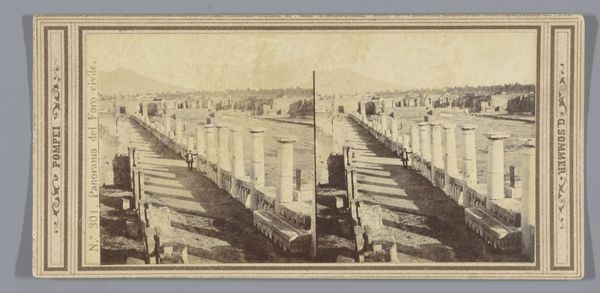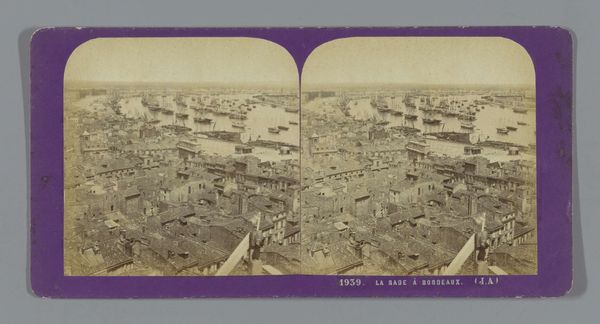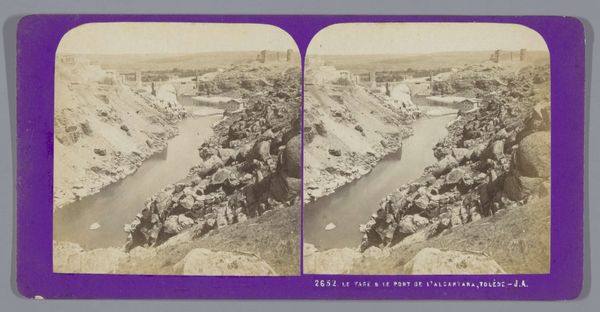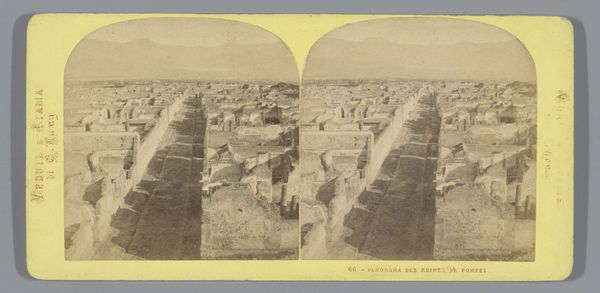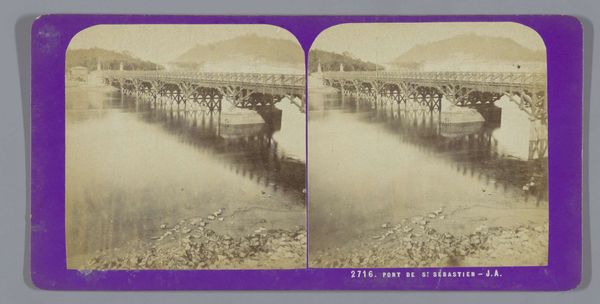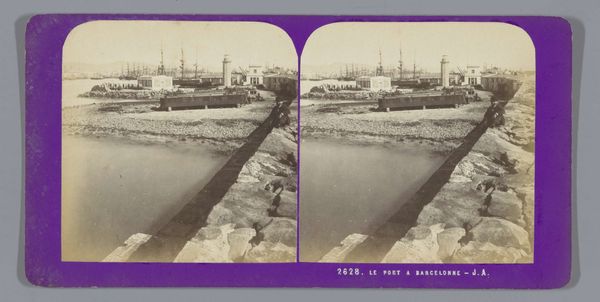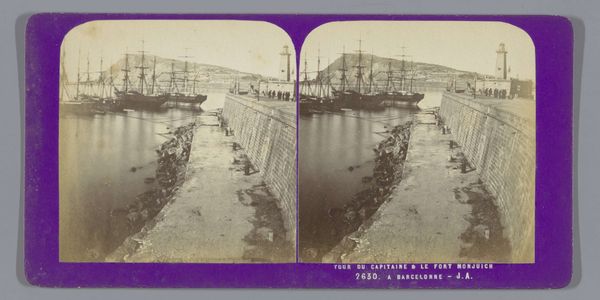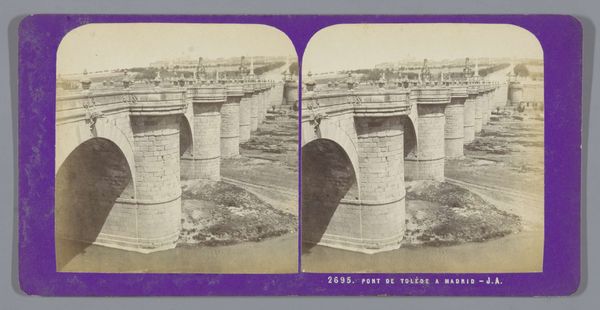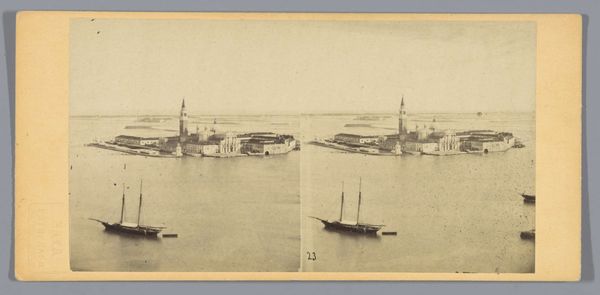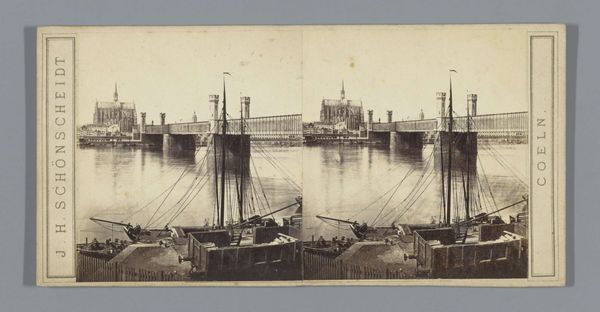
photography, gelatin-silver-print
#
landscape
#
photography
#
orientalism
#
gelatin-silver-print
#
cityscape
Dimensions: height 85 mm, width 170 mm
Copyright: Rijks Museum: Open Domain
Editor: This is "View of the Pont de Pierre in Bordeaux," a gelatin-silver print from sometime between 1862 and 1876, by Jean Andrieu. Looking at the rooftops against the long, low bridge gives me a sense of depth and makes me wonder, what do you see in this photograph? Curator: Formally, the most striking element is the strong horizontal line created by the bridge itself. It cuts through the image, separating the bustling city from the serene expanse of the water. Note how Andrieu uses the rooftops in the foreground to establish a sense of spatial recession, drawing the viewer's eye towards the distant shore. Editor: I hadn’t really thought of the horizon like that before! The placement does provide a very sharp distinction and create more space in the background. I am curious, does the structure of the city itself inform how we read this photograph? Curator: Absolutely. The geometry of the rooftops and the repetitive arches of the bridge create a rhythmic visual pattern. These patterns contribute to a sense of order and stability. Contrast that order with the implied movement of the boats on the river; that visual juxtaposition creates tension and dynamism within the composition. Do you notice how the light source is used to define the textures? Editor: Now that you mention the light, yes. I can definitely see it hitting certain roofs or archways, adding a lot of definition, even at a distance. Curator: The play of light and shadow accentuates the inherent qualities of the image. We could consider the photograph a complex interplay of lines, shapes, textures, and light that reveals how various elements can structure and express the nature of the captured scenery. Editor: I now notice how impactful this all is on its effect as a scene. Thinking about composition has definitely offered a whole new lens on what this image might be trying to show!
Comments
No comments
Be the first to comment and join the conversation on the ultimate creative platform.
